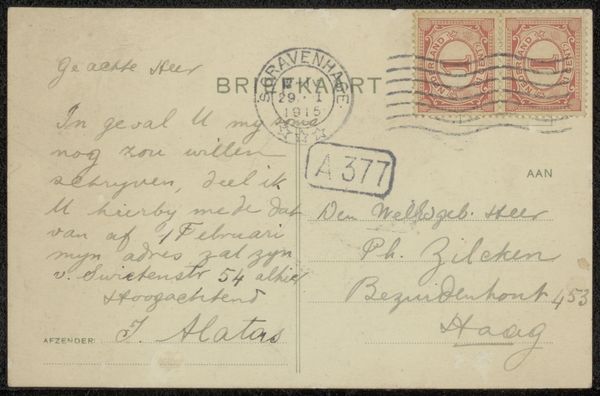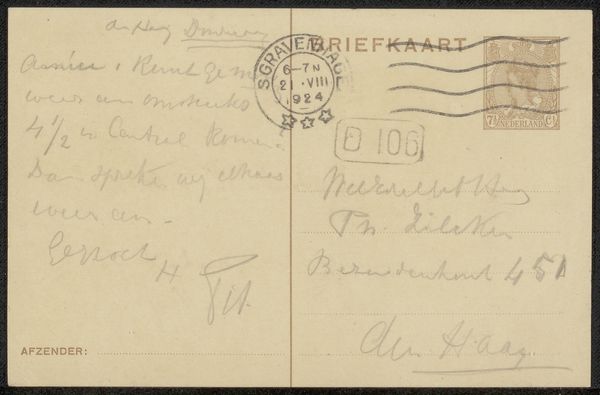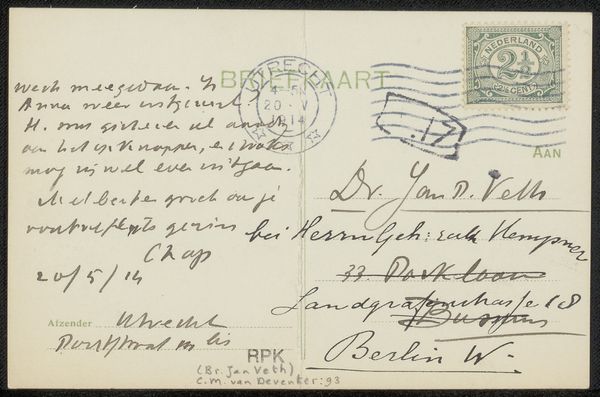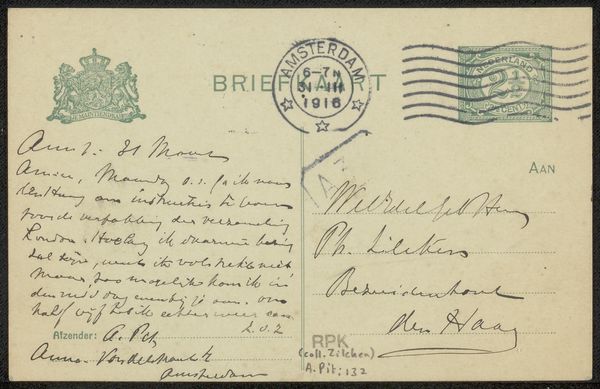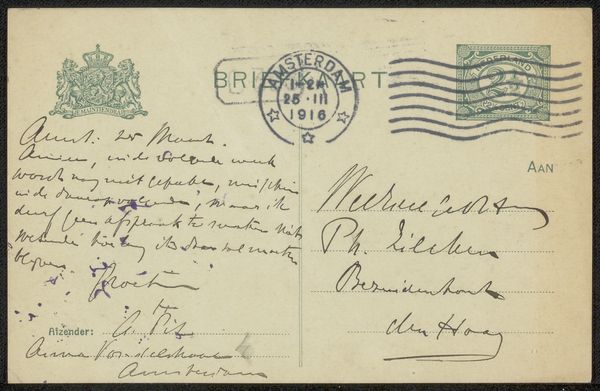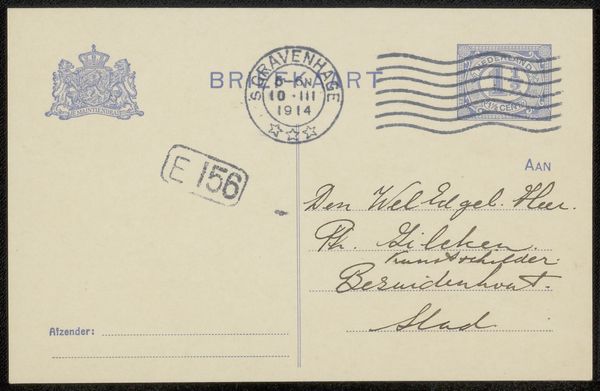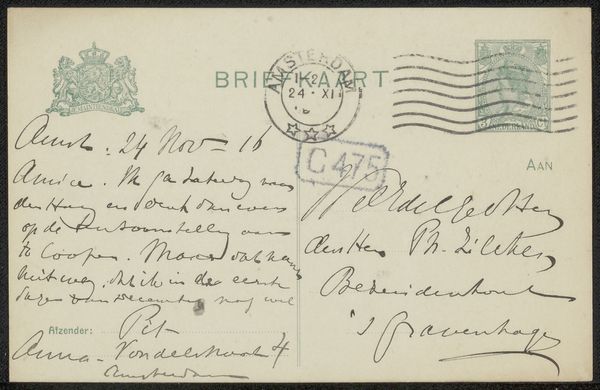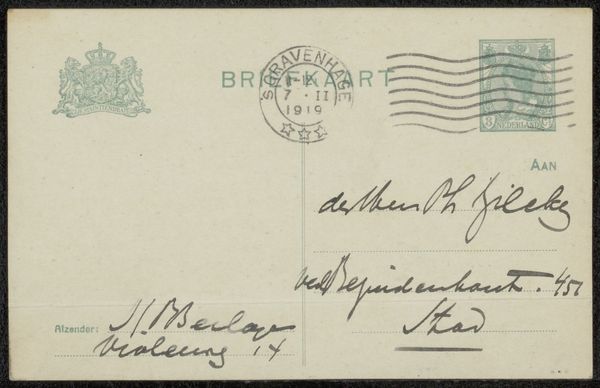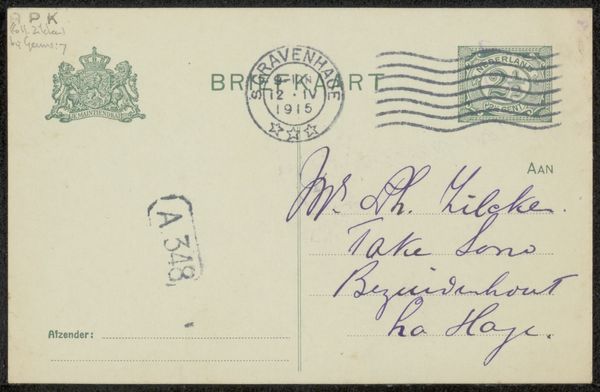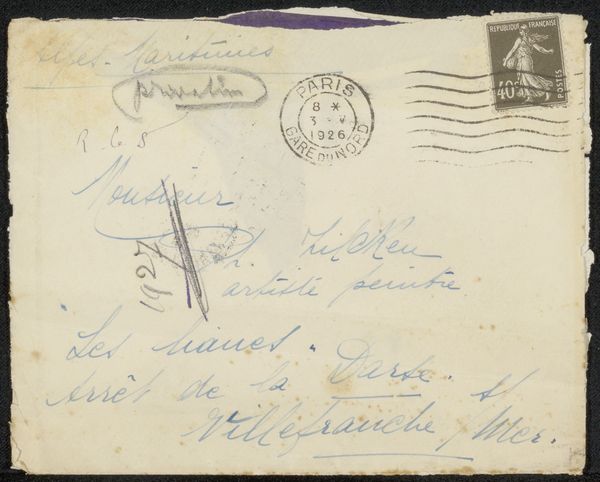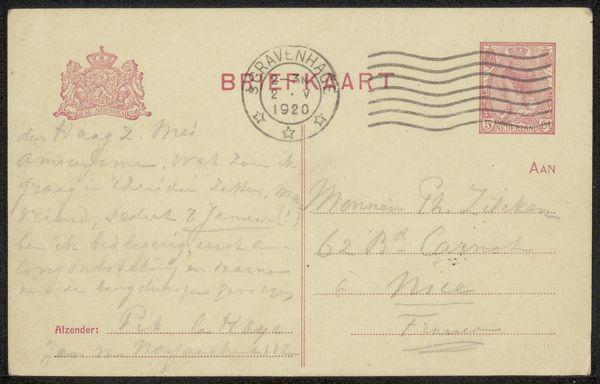
print, paper, ink, pen
#
pen drawing
# print
#
pen sketch
#
paper
#
personal sketchbook
#
ink
#
linocut print
#
ink drawing experimentation
#
pen-ink sketch
#
pen work
#
sketchbook drawing
#
pen
#
storyboard and sketchbook work
#
sketchbook art
Copyright: Rijks Museum: Open Domain
Curator: Here we have a glimpse into the past with "Briefkaart aan Philip Zilcken," likely dating from 1918. It's ink on paper. What strikes you immediately about this piece? Editor: It evokes a sense of fragile intimacy. The handwriting itself, that flowing cursive script, it is balanced by the officialdom of the stamps and postmark; a personal message made official. Curator: Indeed, the materiality tells a story. This wasn't merely communication; it was a transaction processed through the postal system. Look at the texture of the paper; undoubtedly mass-produced, readily available in its time. Notice, the crown stamp as well; signals of a structured societal process of distributing mail. Editor: I see that too, of course, but I'm more drawn to the negative space created by the ink, those calligraphic swirls! The tension between the dark lines and the untouched paper, the eye dances across the composition and notes, even, the accidental ink blots. They offer small syncopations that speak to the handmade element within its execution. Curator: Those very imperfections tell us much. Perhaps shortages during World War I influenced paper quality or even the availability of ink. This everyday item reflects the constraints and realities of its era. Its physical presence tells us something. Editor: Certainly the stamps offer graphic interest. I can read how the sender had to adhere to the rigid framework, the visual elements add to its narrative beyond just the message in ink, transforming the postcard into something formally engaging, like a miniature abstract composition of history! Curator: For me, understanding this as a material object exchanged within a specific context, shapes how we interpret the sender’s message. We are then are led to ponder who C. J. Furnetscher might have been and his relationship to Phillip Zilcken. Editor: Agreed. A humble yet beautifully preserved moment. This work reminds me to appreciate those historical echoes humming just below the surface. Curator: Precisely. These physical vestiges can whisper stories to us, inviting engagement with the artmaking, social transaction, and material culture all at once.
Comments
No comments
Be the first to comment and join the conversation on the ultimate creative platform.
